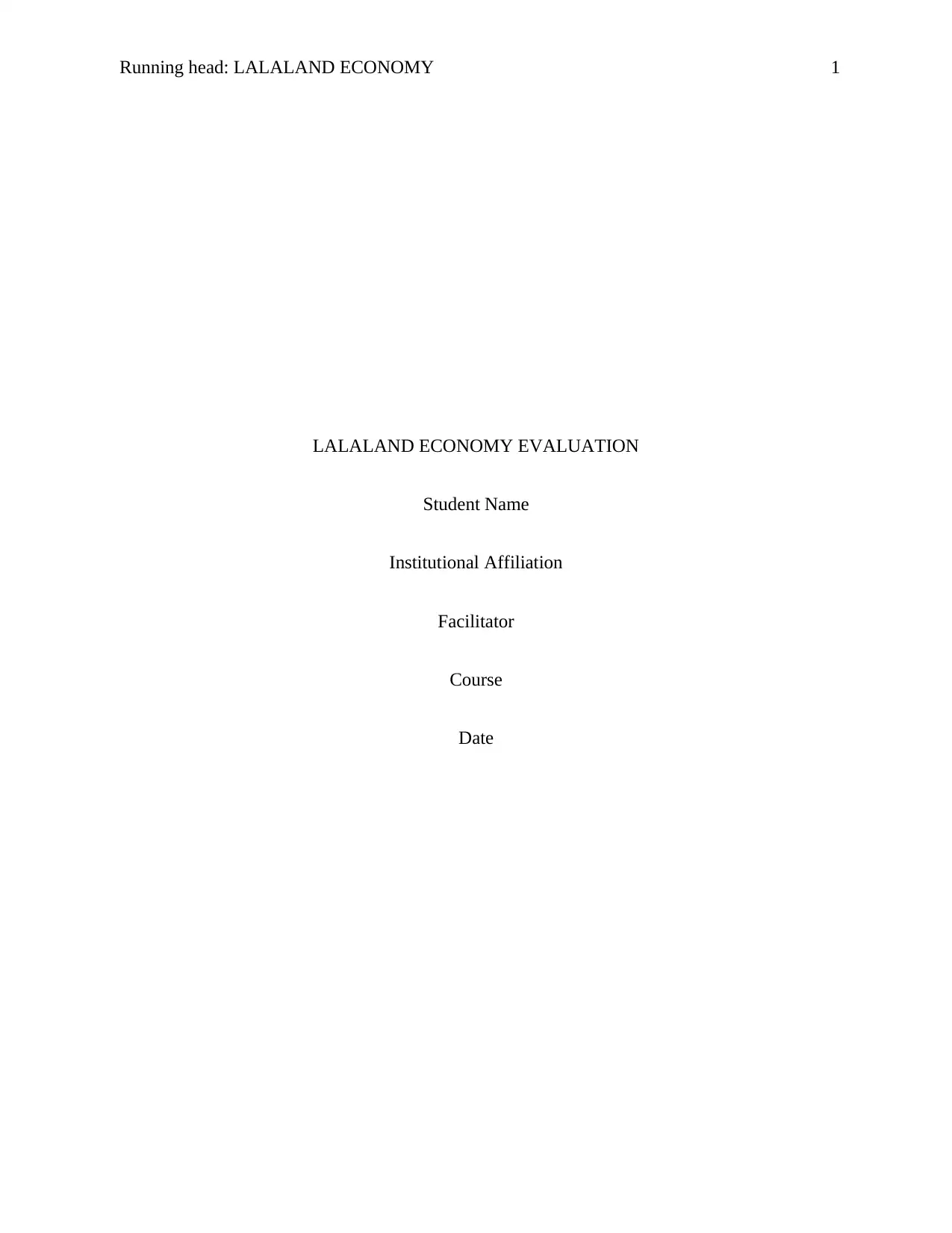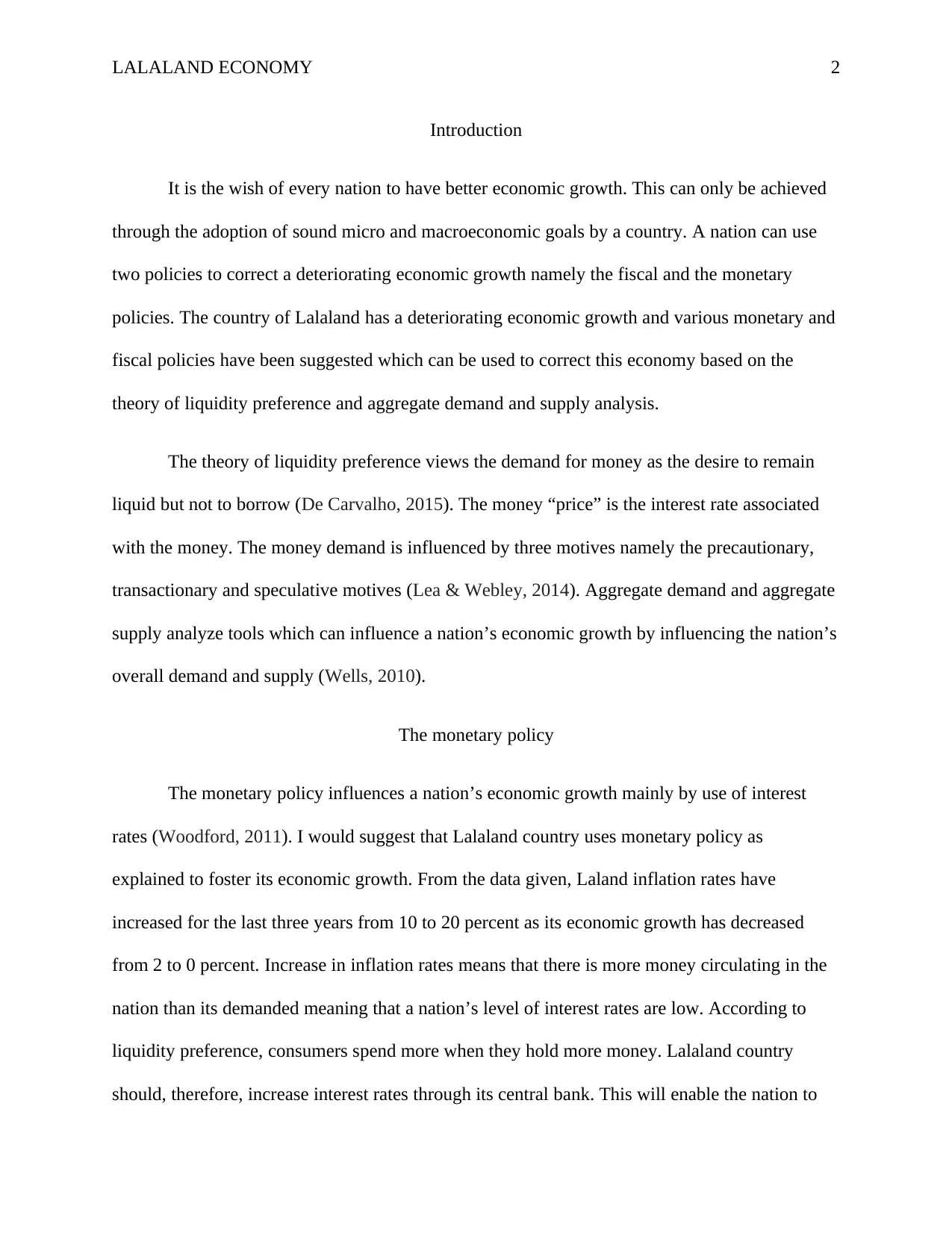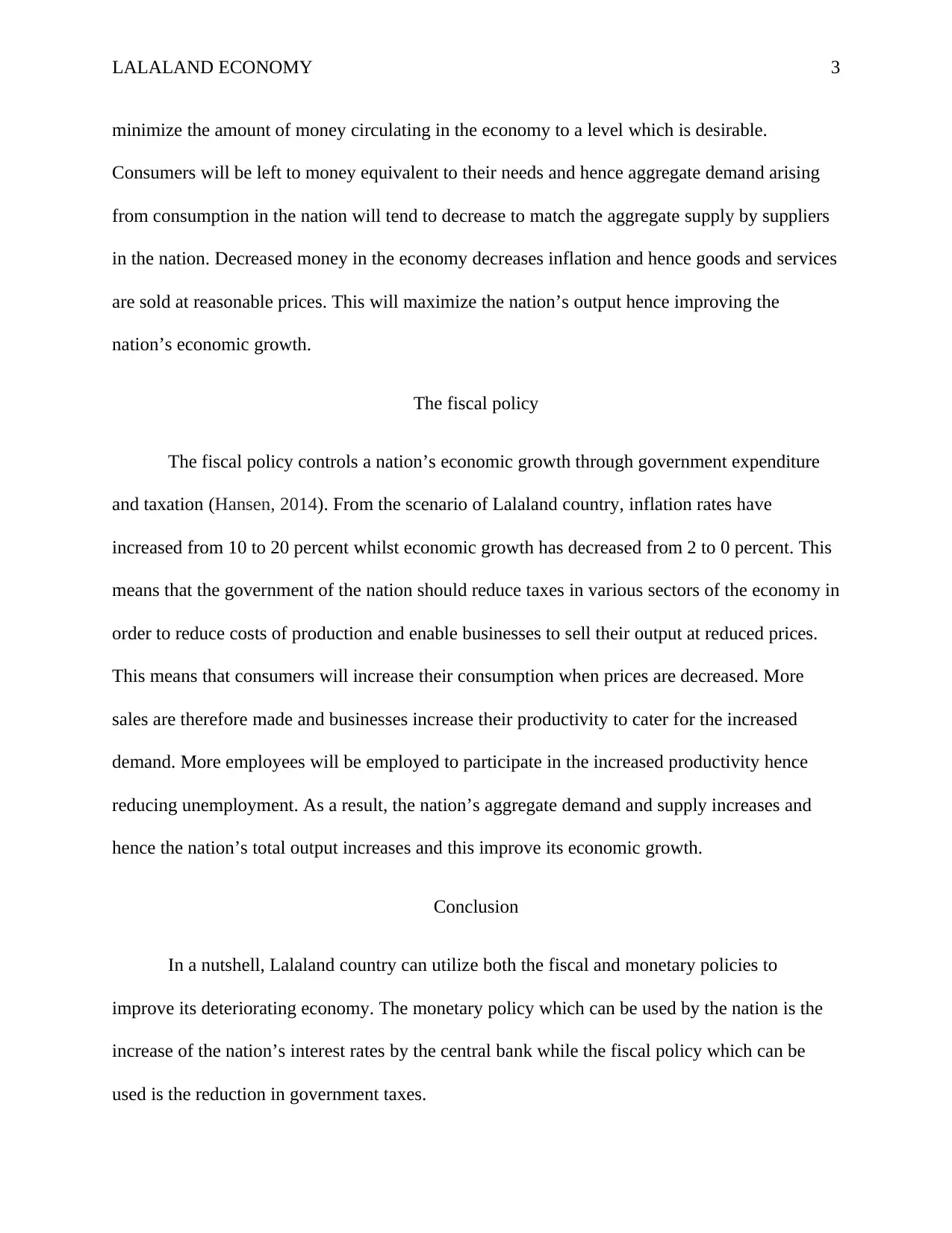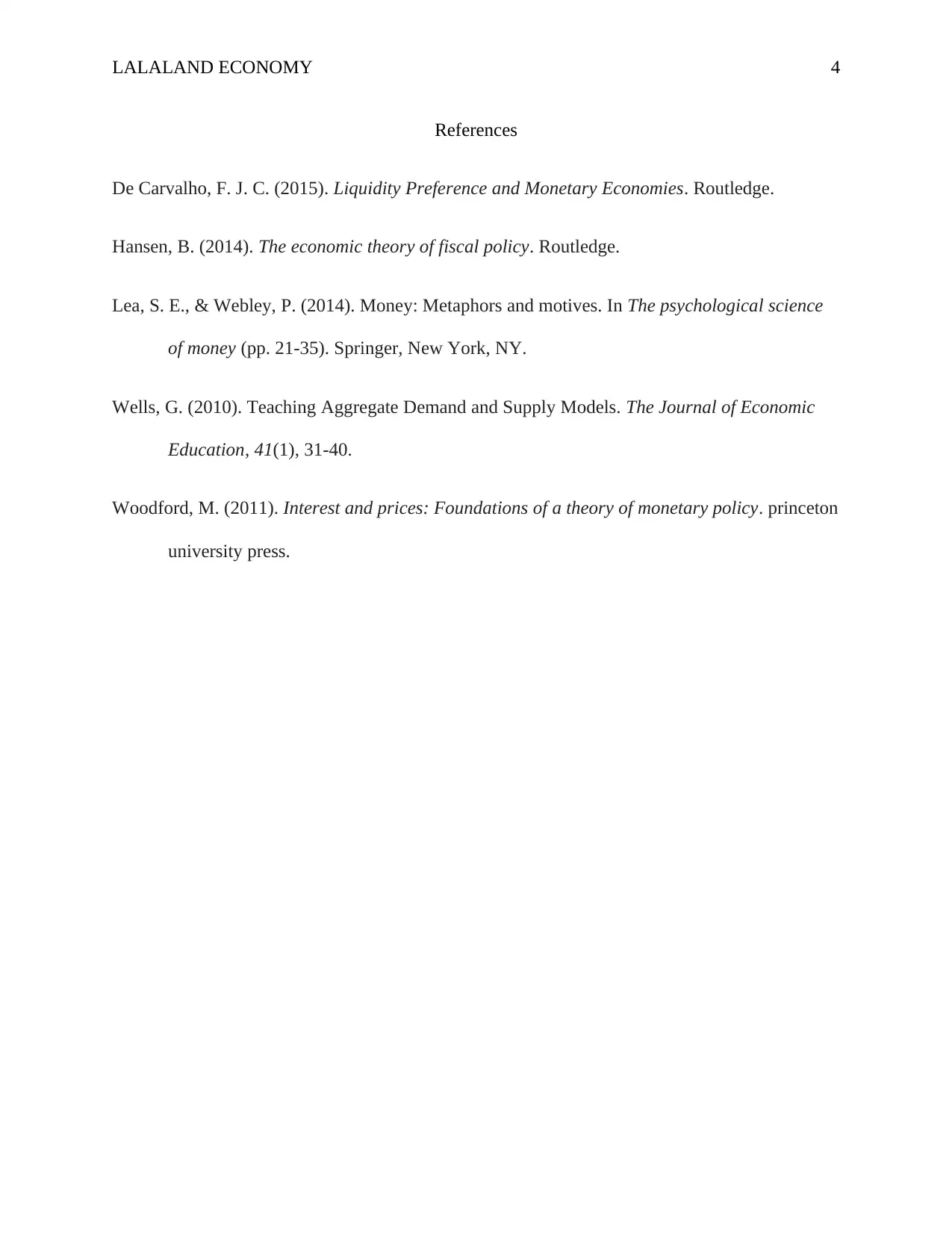Lalaland Economy: Monetary and Fiscal Policy Evaluation Report
VerifiedAdded on 2023/01/19
|4
|782
|73
Report
AI Summary
This report evaluates the economy of Lalaland, focusing on the impact of monetary and fiscal policies on its economic growth. The analysis begins with an introduction that highlights the importance of sound macroeconomic policies, such as monetary and fiscal policies, for achieving economic growth. The report then delves into the specifics of Lalaland's economic situation, noting a decline in economic growth and rising inflation rates. The author recommends that Lalaland's central bank increase interest rates to curb inflation, aligning with the theory of liquidity preference. The report also suggests the government reduce taxes to stimulate production and consumption. The conclusion summarizes the key findings, emphasizing the potential of both monetary and fiscal policies to improve Lalaland's economy. The report references key economic theories and academic resources to support its arguments, including the theory of liquidity preference and aggregate demand and supply analysis.
1 out of 4











![[object Object]](/_next/static/media/star-bottom.7253800d.svg)